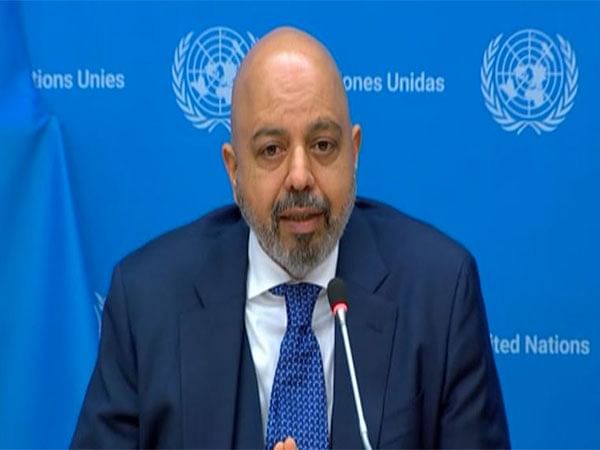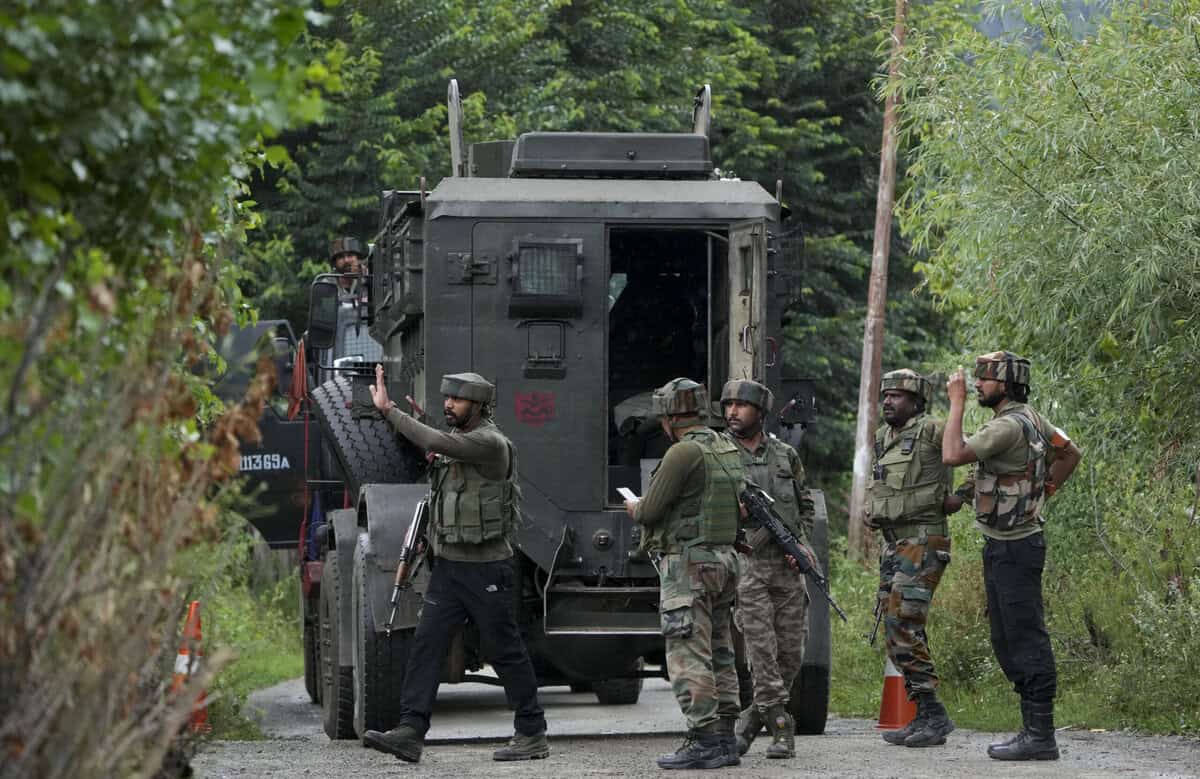SOURCE: IDRW.ORG


The Indian Air Force (IAF) has reached out to private sector companies to develop an advanced Automatic Take-Off and Landing Recording System, aiming to modernize a critical aspect of its operations at air bases across the country. Currently, the IAF manually records all aircraft take-offs and landings using handheld camcorders, a practice essential for post-accident/incident investigations and aircrew training debriefs.
However, this outdated method suffers from sub-optimal coverage, poor resolution, and a complete inability to function at night. By seeking an automated, high-tech solution, the IAF intends to enhance safety, training, and operational oversight—ushering in a leap forward with the help of India’s private industry under the Atmanirbhar Bharat framework.
Continue readingSOURCE: AFI


The Indian Air Force (IAF) faces a critical juncture as over 100 HAL HJT-16 Kiran jet trainers, operational for over five decades, are slated for retirement by 2027. These “Ray of Light” aircraft, introduced in 1968, have been the backbone of Stage-II pilot training for the IAF and Indian Navy, bridging basic training on Pilatus PC-7s to advanced training on BAE Hawks.
With no viable import option available, the indigenously developed HJT-36 Yashas, unveiled at Aero India 2025, is poised to replace the Kirans. However, delays in its induction raise concerns about a potential training gap, as India’s self-reliance ambitions confront the risk of “self-created emergency conditions,” .
Continue readingSOURCE: AFI


In a groundbreaking development for India’s defence sector, the JCBL Group, through its defence arm Airbornics Defence & Space Pvt Ltd (ADSL), has signed India’s first-ever defence Memorandum of Understanding (MoU) with Slovakia. Formalized during President Droupadi Murmu’s state visit to Slovakia in August 2024, this landmark agreement, announced on April 15, 2025, positions JCBL as a key player in co-developing advanced technologies for light tanks, Future Ready Combat Vehicles (FRCVs), and Futuristic Infantry Combat Vehicles (FICVs).
Additionally, the partnership opens the door for JCBL to offer the cutting-edge Eva-M2 6×6 self-propelled howitzer, a globally unique artillery system, for the Indian Army’s Mounted Gun System (MGS) tender.
Continue readingSOURCE: AFI


The Defence Research and Development Organisation (DRDO) of India has embarked on a transformative journey to develop advanced magnetic materials for strategic applications, as outlined in a detailed roadmap presented by its Naval Science and Technological Laboratory (NSTL) in Visakhapatnam. This initiative, spanning short, medium, and long-term goals from 2015 to 2035, aims to bolster India’s self-reliance in defence technologies by creating cutting-edge magnetic materials for motors, sensors, shielding, and future nano-composite devices.
Highlighted in a graphic shared on X in April 2025, DRDO’s efforts underscore a strategic push to reduce dependency on rare earth elements, enhance electromagnetic performance, and pave the way for next-generation defence systems. This article explores DRDO’s roadmap, its implications for India’s military aviation and naval sectors, and the challenges ahead.
Continue readingSOURCE: AFI


In the global race for air superiority, Russia has often been a formidable contender, with its storied design bureaus like MiG and Sukhoi shaping aviation history. While the world’s attention today fixates on the United States’ Next Generation Air Dominance (NGAD), China’s tailless prototypes, and Europe’s collaborative Tempest and FCAS programs, a lesser-known chapter in Russia’s aerospace saga deserves a spotlight. Years ago, Russia’s Mikoyan-Gurevich (MiG) design bureau unveiled a bold 6th-generation fighter concept—a sleek, blended wing body (BWB) design with no vertical tails, featuring 2D thrust vector control (TVC) and a radar cross-section (RCS) test model.
This audacious vision, which briefly positioned Russia ahead of its peers, has since faded into obscurity, starved of funding and overshadowed by other priorities. Could renewed investment revive MiG’s dormant dream and restore Russia’s edge in next-generation air combat?
Continue readingSOURCE: AFI


Recent satellite imagery from INS Rajali, the Indian Navy’s premier naval air station in Arakkonam, Tamil Nadu, has revealed a poignant sight: the decommissioned Tupolev Tu-142M long-range maritime patrol aircraft, once the backbone of India’s anti-submarine warfare capabilities, parked in a forest clearing far from the main runway. This positioning, away from active operational areas or public display zones, suggests that the Navy has no immediate plans to relocate these iconic giants to museums, parks, or other visitor-accessible sites, leaving their future uncertain.
The Tu-142M, affectionately nicknamed the “Albatross,” served the Indian Navy for 29 years, from 1988 to 2017, logging an impressive 30,000 accident-free flying hours. Inducted into the Indian Naval Air Squadron (INAS) 312 at INS Hansa, Goa, and later based at INS Rajali from 1992, the Soviet-era aircraft were renowned for their long-range maritime reconnaissance and anti-submarine warfare capabilities. With a 50-meter wingspan, a combat radius of 6,500 km, and a top speed of 850 kmph, the Tu-142M was the world’s fastest turboprop aircraft, earning a fearsome reputation in operations like Operation Cactus in the Maldives (1988), Op Vijay (1998), Op Parakram (2002), and anti-piracy missions from 2011 onward.
Continue readingSOURCE: PTI
)

India’s first prototype fast-breeder reactor in Tamil Nadu’s Kalpakkam is expected to be commissioned next year, nearly two years after it got the go-ahead from the nuclear regulator, officials have said. The commissioning of the Prototype Fast Breeder Reactor (PFBR) will mark the second stage of India’s three-stage nuclear programme that aims to recycle spent fuel to reduce the inventory of radioactive waste.
The PFBR being developed in Kalpakkam is the first-of-its-kind nuclear reactor to use plutonium-based mixed oxide as fuel and liquid sodium as coolant. It will also utilise the spent fuel of Pressurised Heavy Water Reactors, which form the mainstay of nuclear power in India at present.
Continue readingSOURCE: ANI

Bangladesh on Thursday raised historical unsettled issues with Pakistan, including a formal public apology for the atrocities committed against Bangladesh during the 1971 War of Liberation by the Pakistani forces and pending financial claims from Pakistan.
During Operation Searchlight, Pakistani army killed an estimated three million Bengalis as well as raped over a million women. Bangladesh also raised unsettled issues like the repatriation of stranded Pakistanis and the transfer of foreign aid funds sent to the victims of the 1970 cyclone.
Continue readingSOURCE: PTI


Modernisation demands speed while indigenisation will take time and managing this contradiction is the key, former army chief General Manoj Pande (retd) said on Thursday and asserted it is time to move away from taking incremental steps to “leapfrog and perhaps pole-vault” in the quest for ‘Atmanirbharta’ in defence.
In a special address at The Week Defence Conclave hosted at Manekshaw Centre here, he also said that a “path-breaking reform” in the human resource management has been implemented by the Services in the form of Agnipath scheme.
Continue readingSOURCE: ANI


Former RAW Chief Amarjit Singh Dulat on Friday said that there is need to “move on” and “move forward” with Pakistan and India should hold talks with its western neighbour. “The sands are running out, time is on nobody’s side. We need to move on and we need to move on with Pakistan…I will continue to say that we must move forward with Pakistan,” Dulat said at the launch of his book ‘The Chief Minister and The Spy’.
Terrorism emanating from territories under Pakistan’s control remains a core concern in bilateral relation and India has said that talks and terror cannot go together. India has consistently stressed the need for Pakistan to take credible, irreversible and verifiable action to end cross border terrorism against India and fulfill its assurances, given to India at the highest level in January 2004 and reiterated several times, that territory under its control would not be allowed to be used for terrorism against India in any manner.
Continue readingSOURCE: ISRO


The liquid engines being flown in the fourth stage of PSLV (PS4) use nozzle divergent made up of imported Columbium (C103) material. An alternate material, Stellite (KC20WN), was proposed for the nozzle divergent realization to achieve Atmanirbharatha along with associated cost savings. Stellite is a cobalt based alloy with additions of Chromium, Nickel, Tungsten and Iron.
It is a material which retains good strength at high temperatures up to 11500C and hence becomes a suitable material for high temperature applications. As part of the qualification programme, 3 hot tests were already completed on two hardware in the first phase.
Continue readingSOURCE: PTI


The Gujarat government on Thursday announced a dedicated policy to support space tech sector industries through various incentives and fiscal assistance. With the launch of ‘SpaceTech Policy 2025-2030’, Gujarat has become the first state in India to have a dedicated policy for the space sector, an official release said.
The policy envisages fiscal and non-fiscal support for the entire gamut of space sector activities ranging from manufacturing of satellite payloads and parts, including communication and propulsion systems, ground stations, satellite control centres and space-based application design, it said.
Continue readingSOURCE: ANI


Kuwait’s Permanent Representative to the United Nations and Co-Chair of the Intergovernmental Negotiations (IGN), Tareq Albanai, has expressed support for India’s membership in the United Nations Security Council. He called India a “main player on the world stage” and stressed that India would be a contender if the expansion of the council takes place.
While addressing a press briefing on the status of the UN General Assembly Intergovernmental Negotiation on Security Council Reform on Thursday, he recalled his visit to India with his co-chair, Alex Marschik. Kuwait and Austria co-chair the Intergovernmental Negotiations on Security Council reform.
Continue readingSOURCE: IANS


The anti-terrorist operation by security forces in J&K’s Poonch district entered its 5th day on Friday. Officials said the search continued in Poonch’s Lasana forest belt, where terrorists are believed to be hiding.
The operation, launched by the Romeo Force of the Army’s counter-insurgency Rashtriya Rifles and the Jammu and Kashmir Police’s Special Operations Group (SOG), follows a brief encounter earlier this week with Romeo Force personnel near Lasana village, which lies along the Poonch–Jammu National Highway.
Continue readingSOURCE: RAUNAK KUNDE / NEWS BEAT / IDRW.ORG


Hindustan Aeronautics Limited (HAL), India’s state-owned aerospace giant, is set to deepen private sector involvement in its latest ?650 billion ($7.8 billion) tender for 97 Light Combat Aircraft (LCA) Tejas Mk1A fighters, following the Defence Acquisition Council’s approval on November 30, 2023. This move, aimed at addressing production delays and meeting the Indian Air Force’s (IAF) urgent needs, marks HAL’s second major Tejas contract after a $6.5 billion deal in January 2021 for 83 aircraft.
With production lines in Bangalore and Nashik gearing up to deliver 24 LCAs annually by 2025–2026, HAL’s outsourcing strategy, as revealed by sources to idrw.org, promises to revolutionize assembly timelines and bolster India’s indigenous defence capabilities under the “Make in India” initiative.
Continue reading